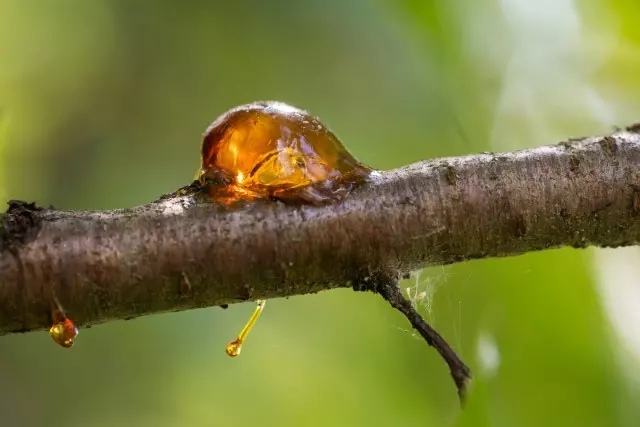Table of Contents
Description For Detecting Citrus Exocortis Disease
Citrus Exocortis is very characteristic superficially. Its main distinction from the rest is the scales and vertical cracks that usually appear on the bark of the stem. Other cases of appearance have also been seen, such as yellow spots on the youngest shoots and dwarfing in more sensitive species.
This disease is caused by the Citrus Exocortis viroid, which is a much smaller pathogen than viruses. Both Troyer and Carrizo citrange rootstocks, as well as Rangpur lime, are susceptible. As well as some varieties of lime, lemon, and pummelo.
Citriculture in some areas tends to be very vulnerable to this disease. So any grafting variety can result in a diseased tree.
The use of Troyer citrange and Carrizo citrange are among the plants most likely to be free of this virus. Although recently patterns of this disease have been observed in these plants and they are usually confused with the symptoms of Gummosis.
But you can perfectly distinguish one from the other, removing the scales and observing that it only attacks the rootstock. If it has Exocortis we will be able to observe that the trunk remains with its natural green color, while for Gummosis the trunk may present brownish colors.
Home Remedy for Gummosis in Lemon Trees
If you do not know what gummosis is, we will simply tell you so that you know it. Gummosis is a disease that causes gummy sap spills (hence the name) in your fruit trees.
Although it is not something to be alarmed about, it is preferable to treat it as soon as you are aware that your citrus is suffering from it. To treat it you should follow the following points:
It is essential to check the water drainage system of your tree, especially if it is planted in a pot. The idea would be to transplant it to another place.
- You should remove all the gummy sap and dead bark that you will find around it. You will have no trouble identifying it as these areas look much darker.
- Remove a whole layer of healthy bark until the entire affected area is surrounded by healthy bark. Keep in mind that you will have to sterilize your tools to avoid re-infection.
- The first thing to do if your fruit tree shows signs of gummosis is to correct any drainage problems. Providing good drainage by amending the soil or, if possible, transplanting is essential to its recovery.
- Finally, you should purchase a copper-based fungicide or Bordeaux mixture and apply it with a brush to the wound. As a preventive measure, we recommend that you apply it between autumn and spring.
- Control fungus and disease in your garden with Captain Jack’s Liquid Copper Fungicide Concentrate!
- Approved for organic gardening, this fungicide is suitable for the production of organic produce and can even be used up until the day of harvest!
- Copper Fungicide effective in the control and prevention of a wide range of plant diseases. Listed common garden diseases include blight, black spot, powdery mildew peach leaf curl and more.

Damage Caused by Citrus Exocortis in Citrus
Much of the damage caused by Exocortis is variable and depends on the strain of the pathogen, the age of the tree at the time the disease is contracted, and the conditions under which the crop is grown.
In general, this disease causes trees to grow smaller than expected and can be mistaken for a gravelly yellowing, with branch drying and general canopy decay.
Citrus Exocortis Symptoms
The most visible symptom when diagnosing this disease is dwarfism. The other visible characteristic that can be observed is the flaking that occurs below the point of the graft union.
On the other hand, the foliar system is another of those affected, manifesting itself with darkening, petiole wrinkling, leaf distortion, clefting, and suberose lesions on the lower faces. Finally, another visible symptom is bending, better known as epinasty of the leaves and stem, which also has the effect of generating yellow spots and cracks on the branch.
What Are the Lesions?
The main lesion that we can find in these plants is that their useful life is shortened significantly. Therefore, in the world of cultivation, it is an important disease because it lowers the yields of the plant.
What Is the Spread of Exocortis?
As for the spread of this disease, its main way is the propagation of the carrier buds. This is a serious problem to combat since it is a disease that can spread to a lot of plant varieties if the appropriate precautions are not taken.
Although the exact vectors of the disease are not known, it is known that it can be transmitted mechanically through pruning tools and cuts.
How to Control the Disease?
The most effective method of control is to remove infected trees from the orchard. To prevent the spread of CEVd from infected plants to healthy ones, with proper use of remedies and styling of cutting tools, we will greatly control the spread of the disease.
How To Avoid Exocortis Disease
The best way to approach a solution to this problem is to select mother plants that are virus-free and graft those plants where they are not susceptible to Exocortis.
Always at the time of any treatment or cut on the plant, we recommend styling the tools with a 0.5% sodium hypochlorite solution. Another alternative is to flame the blades and scissors to burn any remaining bacteria.
Learn more about How to Get Rid of Citrus Leafminer and How to Grow a Lemon Tree in a Pot.


